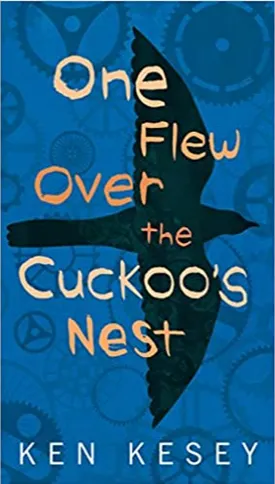One Flew Over the Cuckoo's Nest by Ken Kesey
One Flew Over the Cuckoo’s Nest is a classic novel written by Ken Kesey in 1962. The book has been turned into a number of different works, including a play, a movie, and a Broadway show. Taking place in an Oregon psychiatric hospital, the narrative follows Randle P. McMurphy - a prisoner who feigns insanity in order to avoid a prison sentence - as he attempts to challenge and defy the oppressive ward nurse, Nurse Ratched. McMurphy’s willingness to break the rules of the hospital system, as well as his rebellious and often flirtatious relationship with Ratched, have resulted in the novel being widely studied as an example of the battle of the sexes, as well as the power dynamics of oppressive systems.
The book is set in an unnamed psychiatric hospital, where a thinly-veiled microcosm of the 1950s American culture is experienced. Kesey described the hospital as “a ‘crucible,’ where the social, political and cultural tensions of the era were on full display”. These included the rise of Civil Rights movements, the quickening effects of industrialism, and religious and pro-life sentiments. Alongside these macrocosmic themes, the book’s central story is a battle between the two titular characters: Nurse Ratched and Randle P. McMurphy.
Nurse Ratched is shown to be a cruel and manipulative caretaker, who keeps the hospital ward in line by fear and force. She harshly punishes any patient she perceives as misbehaving, and manipulates the other patients into maintaining her control over the ward. In comparison, McMurphy is perceived as a rebellious and sexual presence upon the ward. His attempts to disrupt Ratched’s control, as well as his flirting with her, have resulted in the novel being seen as a battle of wills between the two characters.
The mental hospital’s oppressive system is represented through the way McMurphy is received by the other patients. Initially unrecognized, and treated violently, McMurphy gradually begins to win over the others with his outrageous antics and gestures of care. By the end of the novel, it is McMurphy’s influence that forces a confrontation between the patients and Ratched. His role as a cultural icon of rebellion, and champion of the common person, resonates with people of all generations.
Aesthetically, One Flew Over the Cuckoo’s Nest is characterized by its surrealism and dark humor. The novel’s narrative takes place through the eyes of Chief Bromden, a patient who is heavily affected by shock therapy, and imagines himself as a giant “Chief”, capable of breaking through walls and towering over the other characters. Kesey also often uses narrative asides between Bromden and the reader to provide background or expand upon the characters’ thoughts and feelings. Addressing topics like the mistreatment of minorities, women’s rights, and the suppression of creativity, Kesey’s writing style has been praised for its ability to express serious themes in an accessible and entertaining way.
Most importantly, the novel has been seen as an exploration of the effect an oppressive system has on the individual, and thus serves as an important reminder of the power of the human spirit. The book has inspired debate over the way psychiatric hospitals can be better managed, as well as an appreciation of the strength and resilience of individuals in the face of oppressive systems. One Flew Over the Cuckoo’s Nest is an important and enduring work which has left a lasting mark on culture, and will continue to be enjoyed by generations to come.

